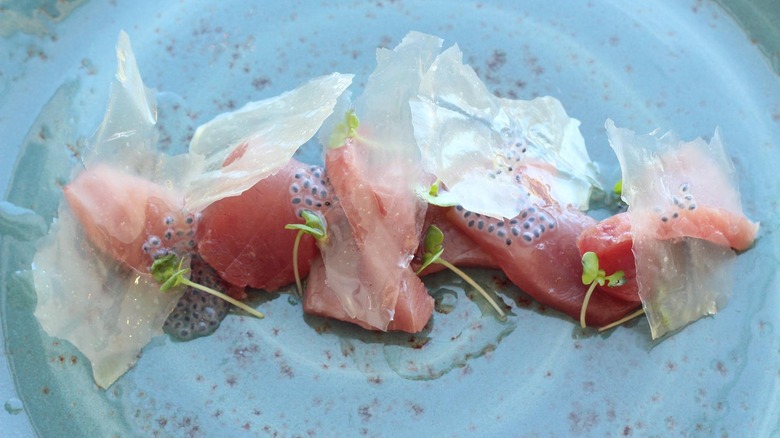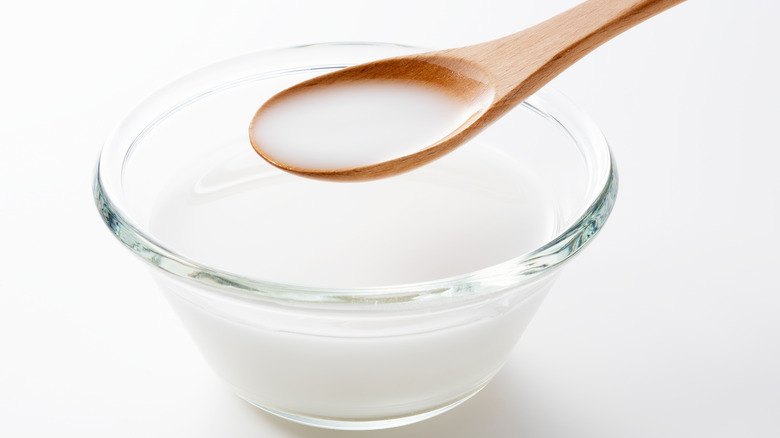How Are Transparent Potato Chips Actually Made?
Admit it, you love potato chips. The salty, crunchy, carbohydrate-filled finger food is highly satisfying and delicious. A bag of chips is a staple at kids' birthday parties, sports events, summer barbecues, and picnics. Even the queen of entertaining, Ina Garten, serves her East Hampton pals bowls of potato chips before dinner, per Today. Restaurants have started making their own chips, serving them in tower form, and incorporating flavors like sardines and pork belly. While some ambitious home cooks may delight in making potato chips from scratch, the rest of us see no need with the range of chip styles and flavors available today for purchase. You open a bag and an appetizer is served.
But there seems to always be someone who goes beyond the call of duty. In cuisine, it's usually someone who likes to play with their food, with possibly a background in molecular gastronomy. And there is certainly nothing wrong with this. After all, if not for these geniuses, the world might have never experienced edible foam or caviar made from fruit. The science sector of dining has inevitably hit the humble potato chip as well. This is seen in the transparent potato chip, also known as glass potato chips, first created by Hamid Salimian, according to Autodesk Instructables. The Iranian-born chef is based in Vancouver and created the see-through snack while working at Diva at the Met. But his method for making such a creation goes way beyond opening up a factory-sealed bag.
The method to the madness
The result of making transparent potato chips is a thin, chip-shaped morsel that resembles a shard of glass yet tastes exactly like a potato chip. To get to this point, it takes a lot of time and patience. Autodesk Instructables explains that you'll need to start with clean Yukon Gold potatoes coated with olive oil and salt, and then baked in the oven. Meanwhile, heat some water until just before it boils. Place the baked potatoes in a bowl and pour the heated water over them, cover the top, and let sit for a couple of hours. Save the potatoes for another use but keep the liquid handy.
Strain the liquid to remove any potato solids and store them in the refrigerator overnight. The next day, pour the liquid into a pot and whisk in potato starch. The mixture will eventually turn into a gel. Once it does, transfer the gel into a squeeze bottle and heat your oven to 135 degrees F. On a parchment-lined baking sheet, squeeze the gel into potato chip sizes and shapes and bake for eight to ten hours. Finally, fry your dried potato gel shapes in a wok or deep pan on fairly low heat. The temperature is what will keep the chips from getting too dark. Once done, sprinkle chips with salt. You are now free to eat as is, with dip, or (most likely after all this work) alongside something equally beautiful and delicious.

